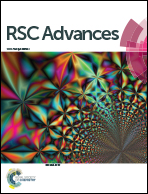Native fluorescence of tear fluid as a tool for diagnostics of glaucoma
Abstract
Glaucoma is one of the leading causes of irreversible vision loss worldwide. There is an enormous need for the detection of its early stages and also speeding up and simplifying regular examinations. Among the new diagnostic approaches, the use of tear fluid has been intensively investigated in recent years. For this purpose, we analyzed the tear fluid of patients with glaucoma and related diseases. To sensitively capture the subtle ocular abnormalities related to glaucoma and manifested in tear fluid, we used synchronous fluorescence spectroscopy. In this observational case–control study, we detected significant differences in the intensity of tear fluid fluorescence located at λex/Δλ = 280/70 nm between the groups of primary open-angle glaucoma (p < 0.01), suspected glaucoma (p < 0.0001), and ocular hypertension (p < 0.05), when compared to the healthy control group. The signal was not significantly higher in women than in men (p = 0.05), and no correlation was found with age (r = −0.05, p > 0.05), nor treatment (p > 0.05). Taken together, tear fluid fluorescence could serve as a discriminative parameter between patients with glaucoma, related diseases, and healthy control subjects and might contribute to the improvement of diagnostics of these diseases.



 Please wait while we load your content...
Please wait while we load your content...